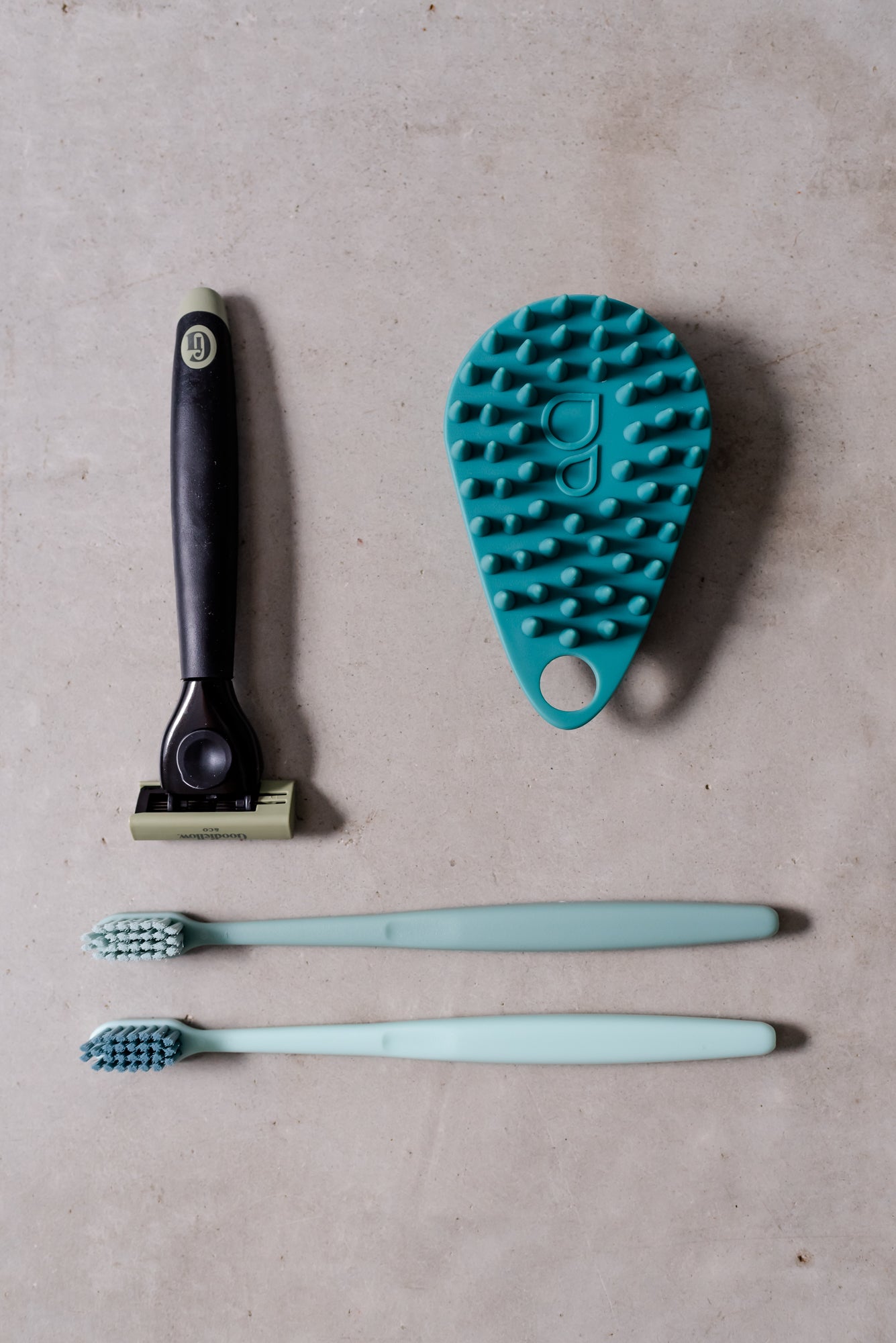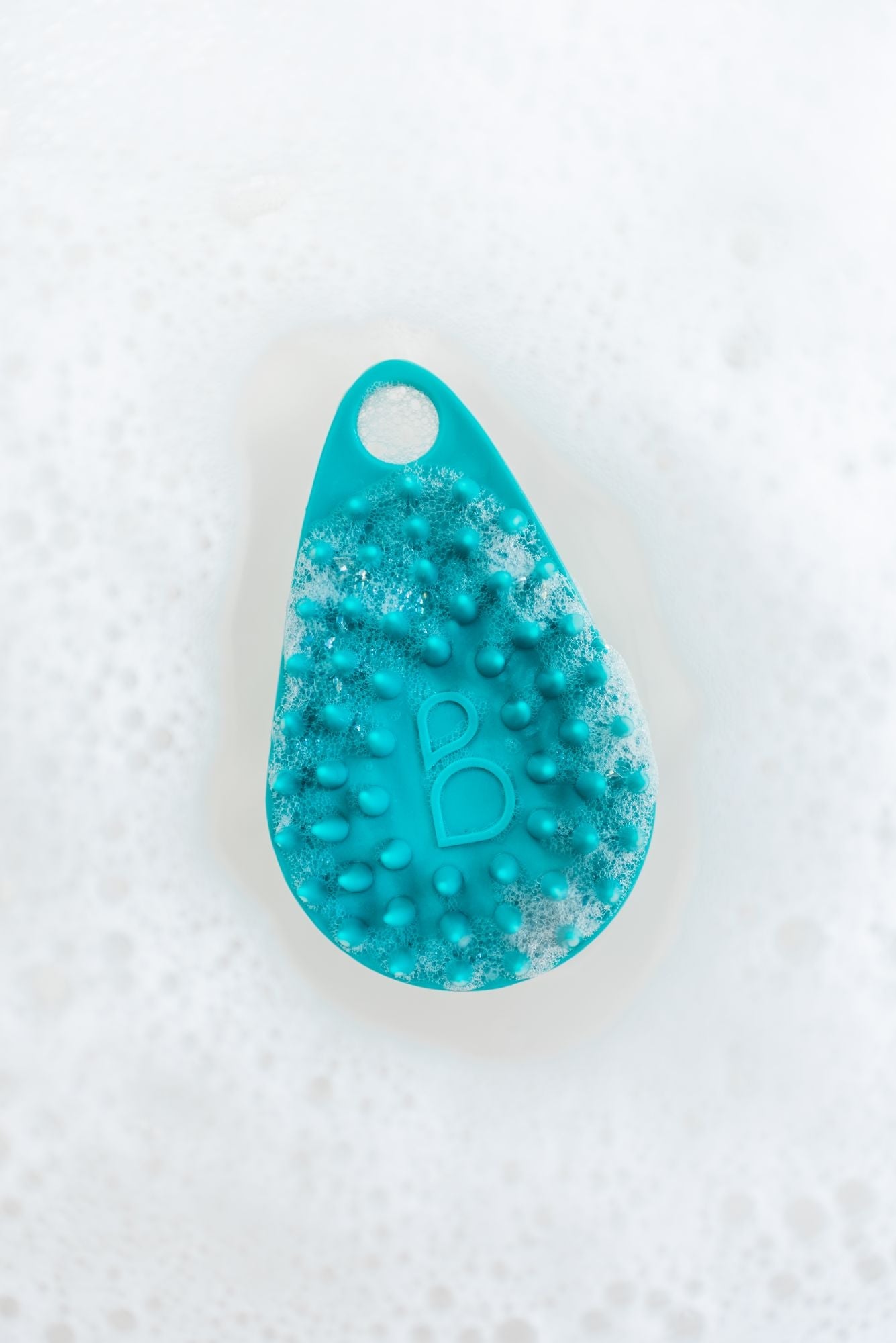Body shaving might seem straightforward. However, if you've dealt with the dreaded razor bumps, you understand that it's more than just about wielding a razor. These frustrating bumps, also known as pseudofolliculitis barbae, occur when hairs curl back into the skin causing inflammation and irritation. They can be itchy and painful, potentially leading to serious skin concerns if not promptly addressed.
However, a purposeful shaving routine involving proper preparation, meticulous technique, and careful aftercare can save you from these often painful razor bumps. Included in your new routine is the scrub-dub® body scrubber, a wonderful tool for gentle and effective full-body exfoliation. Here is your guide to a smoother, bump-free shave.
Step 1: Preparation
Before grabbing that razor, proper skin preparation is crucial.
Exfoliate with scrub-dub® Body Scrubber: This step is essential in treating and preventing razor bumps. Dead skin cells can trap hairs causing them to direct back into the skin. Making use of the scrub-dub® body scrubber can provide a gentle yet effective exfoliation that will unblock pores, rid you of dead skin cells, and leave your skin primed for a closer, smoother shave.
Wet Your Skin and Hair Well: Soften your skin and hair by bathing or showering before you start shaving. Softer hairs are easier to cut and less likely to become ingrown. Ideally, shave after about 10 minutes into your warm bath or shower.
Apply Shave Cream or Gel: These products further soften the hair allowing cleaner cuts and create a smooth glide for the razor, reducing chances of cuts or irritation. Apply it in circular motions a as this can also help lift the hairs and promote a closer shave.
Step 2: The Shaving Technique
Your shaving technique is as critical as your preparation.
Use a Sharp & Clean Razor: Dull blades tend to pull on the hair rather than giving a clean cut, thus, heightening the possibilities of razor bumps. Change your blades regularly and ensure to rinse your razor under water between strokes.
Shave in the direction of Hair Growth: While shaving against the grain could lend you a close shave, it amplifies the risk of resulting in razor burns, irritations, and bumps. Hence, always shave in the direction that your hair grows.
Avoid Pressing Too Hard: Allow the blade to do its job – if you apply too much pressure, excessive skin will be removed, causing more irritation.
Step 3: Post-shaving Care
Post-shave care is as essential as the steps preceding it.
Rinse with Cool Water: This helps close the pores, tighten the skin, and lower inflammation levels.
Apply a Soothing Balm: Balms or aloe vera can help to soothe and hydrate the skin, reducing the possibility of developing razor bumps.
Regularly Moisturize: You should keep your skin moisturized in the days following shaving. Moisture is vital for healing and helps new hairs break through the skin without causing razor bumps.
Use Products Designed to Treat Razor Bumps: If you're more susceptible to razor bumps and they appear despite taking all precautionary measures, you may need a cream or gel specifically designed to combat these bumps.
In conclusion, understanding the causes of razor bumps and taking measures to mitigate them is a sure way to evade them in your shaving routine. Remember, there is no one-size-fits-all solution, but by integrating a few changes into your shaving routine -- such as using the scrub-dub body scrubber for thorough mechanical exfoliation -- you can help reduce developing razor bumps. To smoother, healthier skin!


